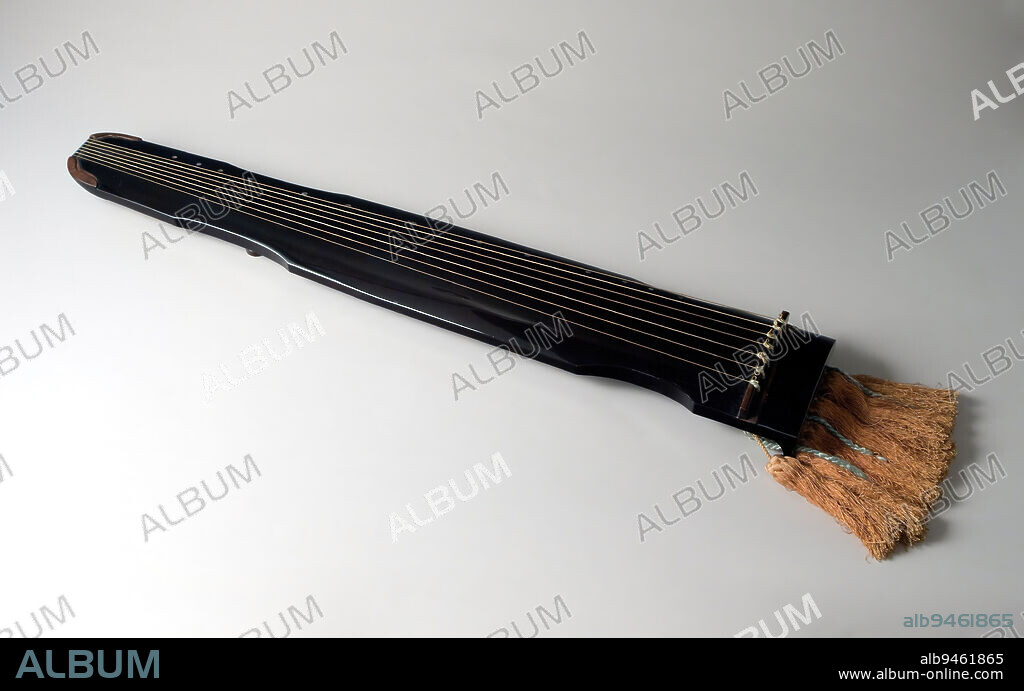alb9461865
Zither named 'Flowing Water', 1794, Nakamura Stetsu, 3 × 32 3/8 × 5 3/8 in. (7.62 × 82.23 × 13.65 cm), Wood with black lacquer and mother-of-pearl inlay; silk tassels, Japan, 18th century, The seven-stringed zither, called kin in Japanese, has been played in China (where it is called qin) for at least 3,000 years. It was introduced to Japan by the 700s and was a common instrument in the cultural sphere represented in The Tale of Genji. This example of a kin was created by an artist of the celebrated Nakamura family of lacquerers, all of whom used the given name Stetsu. The artist of this zither, which is dated to 1794, was probably the fifth-generation Nakamura Stetsu, who lived from 1764 to 1811. The Nakamura lacquerers maintained relationships with Japans leading cultural trendsetters and were celebrated for their craftsmanship.

|
Añadir a otro lightbox |
|
Añadir a otro lightbox |



¿Ya tienes cuenta? Iniciar sesión
¿No tienes cuenta? Regístrate
Compra esta imagen.
Selecciona el uso:

Descripción:
Ver traducción automática
Zither named 'Flowing Water', 1794, Nakamura Stetsu, 3 × 32 3/8 × 5 3/8 in. (7.62 × 82.23 × 13.65 cm), Wood with black lacquer and mother-of-pearl inlay; silk tassels, Japan, 18th century, The seven-stringed zither, called kin in Japanese, has been played in China (where it is called qin) for at least 3,000 years. It was introduced to Japan by the 700s and was a common instrument in the cultural sphere represented in The Tale of Genji. This example of a kin was created by an artist of the celebrated Nakamura family of lacquerers, all of whom used the given name Stetsu. The artist of this zither, which is dated to 1794, was probably the fifth-generation Nakamura Stetsu, who lived from 1764 to 1811. The Nakamura lacquerers maintained relationships with Japans leading cultural trendsetters and were celebrated for their craftsmanship.
Crédito:
Album / quintlox
Autorizaciones:
Modelo: No - Propiedad: No
¿Preguntas relacionadas con los derechos?
¿Preguntas relacionadas con los derechos?
Tamaño imagen:
5048 x 3146 px | 45.4 MB
Tamaño impresión:
42.7 x 26.6 cm | 16.8 x 10.5 in (300 dpi)
 Pinterest
Pinterest Twitter
Twitter Facebook
Facebook Copiar enlace
Copiar enlace Email
Email
